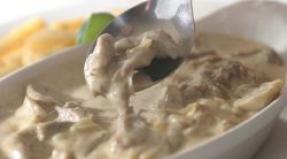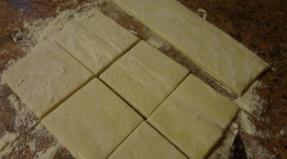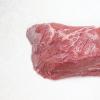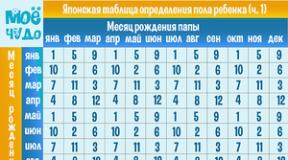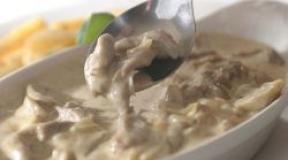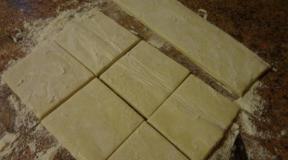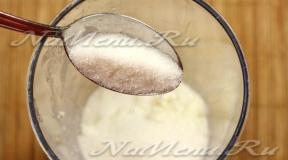An educational and methodological complex of practical training according to the program of the professional module of medical education “performing work in the profession of a junior nurse in caring for patients.” Methods and means of disinfection of objects for parenteral viral hepatitis Dezin
From the moment a patient is identified with viral hepatitis until hospitalization or in case of isolation at home, ongoing disinfection is carried out in the outbreak. It is organized by the local doctor, and carried out by the person caring for the patient, who is instructed by medical workers.
The patient is isolated in a separate room or a fenced-off part of it, and is given items for strictly individual use: bedding, linen, towels, handkerchiefs, napkins, personal hygiene items, dishes for eating, dishes for collecting and disinfecting secretions.
The patient’s linen is boiled for 15 minutes from the moment of boiling in a 2% soap-soda solution or a solution of any detergent (20 g per 1 liter of water), followed by washing.
Dishes and toys (except plastic ones) are boiled in a baking soda solution for 15 minutes from the moment of boiling. Plastic toys are washed with hot 2% soda solution or soap, then immersed in boiling water.
The patient's excretions (feces, urine, vomit) are covered with dry bleach, heat-resistant bleaching lime or neutral calcium hypochlorite (NCH) in a ratio of 200 g/kg for 60 minutes, after which they are drained into the sewer. If the discharge contains little moisture, then add water in a ratio of 1:4.
Dishes from under the secretions after emptying are disinfected in one of the solutions: 3% solution of chloramine, bleach, heat-resistant bleaching lime, 1% solution of NGK for 30 minutes or in 1% solution of chloramine, bleach, heat-resistant bleaching lime, 0.5 % NGK solution for 60 minutes, then washed outside and inside with water.
The floor is wiped with a hot 2% soap or soda solution, or a solution of any detergent. Use a separate rag to wipe the handles of the toilet doors and flush tank.
Cleaning material (rags, washcloths) is boiled in a 2% soda solution or in a solution of any detergent for 15 minutes from the moment of boiling.
When soiled, bedding, carpets, and carpet runners are cleaned with a brush soaked in a 1% chloramine solution or ironed with a hot iron through a damp cloth and put away for the duration of quarantine.
Do not allow flies to enter the room. Windows and vents are covered with a mesh with a mesh size of no more than 2x1.2 mm, and adhesive tapes are used.
At home, you should widely use cleaning agents or detergents with an antimicrobial effect ("Shine", "Sanita", "Posudomoy", "Desus", "Disinfectant", etc.).
Final disinfection in comfortable apartments is carried out by the population to the extent of current disinfection.
In communal apartments, in comfortable individual apartments where more than one child lives, in dormitories, preschool institutions, schools (according to epidemiological indications), hotels, final disinfection is carried out by the disinfection department (department) of the sanitary-epidemiological station, disinfection station or rural hospital in accordance with by order of the USSR Ministry of Health No. 60 dated January 17, 1979 “On measures to further strengthen and develop disinfection business.”
Methods and means of disinfection for viral hepatitis are outlined in Table 1 of this appendix.
In preschool institutions, ongoing disinfection is carried out by the staff of the child care institution upon suspicion of a HA disease and before hospitalization of the patient, as well as within 35 days of observation from the moment of isolation of the last sick person. In other groups, during this period, control over the implementation of the sanitary and hygienic regime is strengthened.
A disinfection doctor or assistant epidemiologist of a disinfection unit (disinfection station) instructs medical personnel (doctor, nurse) of a child care facility about the duration and scope of disinfection measures, and leaves a special order.
A doctor or nurse at a children's institution instructs and trains nannies, teachers, kitchen workers, laundry workers, etc. on how to carry out disinfection during the quarantine period, and controls the completeness and proper quality of its implementation.
During quarantine in a group of people who have been in contact with the patient, carpets, rugs, soft toys, and curtains are excluded from use. They control flies indoors and on the territory.
During the entire quarantine period, tableware and tea utensils, rags for washing them, tables, rags for cleaning, leftover food, linen, toys, playpens, shelves for storing oilcloth linings, children's playrooms, door handles, taps, bathrooms, pots are disinfected , cleaning equipment.
The floor, furniture, window sills, doors, door handles, taps are wiped at least 2 times a day with a rag soaked in a disinfectant solution. The headboards of the beds are wiped daily at the end of the working day with a rag moistened with warm water and detergent.
The head of the child care facility, doctor and nurse are personally responsible for carrying out disinfection measures.
Disinfection measures in schools are carried out in conjunction with sanitary and hygienic measures, carried out in accordance with the “Sanitary Rules for the Construction and Maintenance of Secondary Schools” N 1186-a-74, approved by the USSR Ministry of Health on September 29, 1974.
Final disinfection at the school is carried out at the direction of the epidemiologist in the event of group diseases (3 or more cases) or repeated cases, by the disinfection station, disinfection department (department) of the sanitary-epidemiological station.
In isolated cases of HA, the final disinfection is carried out by the school’s technical staff according to the recommendations of the disinfection station or the disinfection department (department) of the sanitary and epidemiological station.
The following areas are subject to disinfection: the premises and equipment of the classroom where the patient was identified, cafeterias, a dining room, bathrooms, corridors, a gym and music classes, workshops and other common areas, stair railings. If classes at a school are conducted according to the classroom system, then final disinfection is carried out in all classrooms where the sick person studied.
If illnesses occur in an extended-day group, final disinfection is carried out in the premises of this group, and then preventive disinfection during quarantine.
During the quarantine period for 35 days from the moment of the last illness, special attention is paid to compliance with the sanitary and hygienic regime and the correct implementation of preventive disinfection in cafeterias, canteens and bathrooms, which is carried out by technical staff and school nurses. During this period, children are not involved in cleaning the school.
In schools with an increased incidence of HA, objects such as door handles in toilets, toilet flush valves, and water taps are constantly wiped with a rag soaked in a disinfectant solution after each break. Door handles in classrooms and stair railings are wiped with disinfectants 2 times a day during wet cleaning of premises.
In schools that do not have running water or are located in areas where there are defects in the supply of good-quality water to the population, students are provided with boiled water. Install enameled tanks with a lock for drinking water. The water in the tanks is changed once per shift; after draining the water, the tank and lid are doused with boiling water from the outside and inside.
In settlements with an increased epidemiological risk of the spread of HA, provision of schools with disinfectants for preventive disinfection is assigned to local clinics, which are assigned to schools. Payment for disinfectants is made at the expense of the public education department.
In hotbeds of viral hepatitis, extensive sanitary and educational work is needed on measures to prevent these infections and strict adherence to the rules of personal hygiene. For sanitary propaganda, anti-epidemic and sanitary measures, the sanitary activists of the Red Cross and Red Crescent are widely involved, using the media in this work.
font size
ORDER of the USSR Ministry of Health dated 12-07-89 408 ON MEASURES TO REDUCE THE INCIDENCE OF VIRAL HEPATITIS IN THE COUNTRY (2019) Relevant in 2018
DISINFECTING MEASURES FOR VIRAL HEPATITIS
From the moment a patient is identified with viral hepatitis until hospitalization or in case of isolation at home, ongoing disinfection is carried out in the outbreak. It is organized by the local doctor, and carried out by the person caring for the patient, who is instructed by medical workers.
The patient is isolated in a separate room or a fenced-off part of it, and is given items for strictly individual use: bedding, linen, towels, handkerchiefs, napkins, personal hygiene items, dishes for eating, dishes for collecting and disinfecting secretions.
The patient’s linen is boiled for 15 minutes from the moment of boiling in a 2% soap-soda solution or a solution of any detergent (20 g per 1 liter of water), followed by washing.
Dishes and toys (except plastic ones) are boiled in a 2% solution of baking soda for 15 minutes from the moment of boiling. Plastic toys are washed with hot 2% soda solution or soap, then immersed in boiling water.
The patient's excretions (feces, urine, vomit) are covered with dry bleach, heat-resistant bleaching lime or neutral calcium hypochlorite (NCH) in a ratio of 200 g/kg for 60 minutes, after which they are drained into the sewer. If the discharge contains little moisture, then add water in a ratio of 1:4.
Dishes from under the secretions after emptying are disinfected in one of the solutions: 3% solution of chloramine, bleach, heat-resistant bleaching lime, 1% solution of NGK for 30 minutes or in 1% solution of chloramine, bleach, heat-resistant bleaching lime, 0.5 % NGK solution for 60 minutes, then washed outside and inside with water.
The floor is wiped with a hot 2% soap or soda solution, or a solution of any detergent. Use a separate rag to wipe the handles of the toilet doors and flush tank.
Cleaning material (rags, washcloths) is boiled in a 2% soda solution or in a solution of any detergent for 15 minutes from the moment of boiling.
When soiled, bedding, carpets, and carpet runners are cleaned with a brush soaked in a 1% chloramine solution or ironed with a hot iron through a damp cloth and put away for the duration of quarantine.
Do not allow flies to enter the room. Windows and vents are covered with a mesh with a mesh size of no more than 2x1.2 mm, and adhesive tapes are used.
At home, you should widely use cleaning agents or detergents with an antimicrobial effect ("Shine", "Sanita", "Posudomoy", "Desus", "Disinfectant", etc.).
Final disinfection in comfortable apartments is carried out by the population to the extent of current disinfection.
In communal apartments, in comfortable individual apartments where more than one child lives, in dormitories, preschool institutions, schools (according to epidemiological indications), hotels, final disinfection is carried out by the disinfection department (department) of the sanitary-epidemiological station, disinfection station or rural hospital in accordance with by order of the USSR Ministry of Health No. 60 dated January 17, 1979 “On measures to further strengthen and develop disinfection business.”
Methods and means of disinfection for viral hepatitis are outlined in Table 1 of this appendix.
In preschool institutions, ongoing disinfection is carried out by the staff of the child care institution upon suspicion of a HA disease and before hospitalization of the patient, as well as within 35 days of observation from the moment of isolation of the last sick person. In other groups, during this period, control over the implementation of the sanitary and hygienic regime is strengthened.
A disinfection doctor or assistant epidemiologist of a disinfection unit (disinfection station) instructs medical personnel (doctor, nurse) of a child care facility about the duration and scope of disinfection measures, and leaves a special order.
A doctor or nurse at a children's institution instructs and trains nannies, teachers, kitchen workers, laundry workers, etc. on how to carry out disinfection during the quarantine period, and controls the completeness and proper quality of its implementation.
During quarantine in a group of people who have been in contact with the patient, carpets, rugs, soft toys, and curtains are excluded from use. They control flies indoors and on the territory.
During the entire quarantine period, tableware and tea utensils, rags for washing them, tables, rags for cleaning, leftover food, linen, toys, playpens, shelves for storing oilcloth linings, children's playrooms, door handles, taps, bathrooms, pots are disinfected , cleaning equipment.
The floor, furniture, window sills, doors, door handles, taps are wiped at least 2 times a day with a rag soaked in a disinfectant solution. The headboards of the beds are wiped daily at the end of the working day with a rag moistened with warm water and detergent.
The head of the child care facility, doctor and nurse are personally responsible for carrying out disinfection measures.
Disinfection measures in schools are carried out in conjunction with sanitary and hygienic measures, carried out in accordance with the “Sanitary Rules for the Construction and Maintenance of Secondary Schools” N 1186-a-74, approved by the USSR Ministry of Health on September 29, 1974.
Final disinfection at the school is carried out at the direction of the epidemiologist in the event of group diseases (3 or more cases) or repeated cases, by the disinfection station, disinfection department (department) of the sanitary-epidemiological station.
In isolated cases of HA, the final disinfection is carried out by the school’s technical staff according to the recommendations of the disinfection station or the disinfection department (department) of the sanitary and epidemiological station.
The following areas are subject to disinfection: the premises and equipment of the classroom where the patient was identified, cafeterias, a dining room, bathrooms, corridors, a gym and music classes, workshops and other common areas, stair railings. If classes at a school are conducted according to the classroom system, then final disinfection is carried out in all classrooms where the sick person studied.
If illnesses occur in an extended-day group, final disinfection is carried out in the premises of this group, and then preventive disinfection during quarantine.
During the quarantine period for 35 days from the moment of the last illness, special attention is paid to compliance with the sanitary and hygienic regime and the correct implementation of preventive disinfection in cafeterias, canteens and bathrooms, which is carried out by technical staff and school nurses. During this period, children are not involved in cleaning the school.
In schools with an increased incidence of HA, objects such as door handles in toilets, toilet flush valves, and water taps are constantly wiped with a rag soaked in a disinfectant solution after each break. Door handles in classrooms and stair railings are wiped with disinfectants 2 times a day during wet cleaning of premises.
In schools that do not have running water or are located in areas where there are defects in the supply of good-quality water to the population, students are provided with boiled water. Install enameled tanks with a lock for drinking water. The water in the tanks is changed once per shift; after draining the water, the tank and lid are doused with boiling water from the outside and inside.
In settlements with an increased epidemiological risk of the spread of HA, provision of schools with disinfectants for preventive disinfection is assigned to local clinics, which are assigned to schools. Payment for disinfectants is made at the expense of the public education department.
In hotbeds of viral hepatitis, extensive sanitary and educational work is needed on measures to prevent these infections and strict adherence to the rules of personal hygiene. For sanitary propaganda, anti-epidemic and sanitary measures, the sanitary activists of the Red Cross and Red Crescent are widely involved, using the media in this work.
Viral hepatitis is a complex disease that affects liver tissue and is caused by viruses. Hepatitis viruses can have different origins and belong to different taxa. They may differ in molecular and biochemical characteristics, but they all cause disease in humans. Chronic liver diseases that are caused by viral hepatitis B and C are the most dangerous and are among the ten most dangerous diseases. More than 2 million people are infected.

Disinfection against viral hepatitis, price
Individuals
Legal entities
Apartments
Order treatment for hepatitis
Viral hepatitis can be caused by:

Hepatitis can affect not only people, but also animals. For example, dogs are affected by an adenovirus, ducks by an enterovirus, mice by a coronavirus, and monkeys by a flavivirus.
The most severe hepatitis infection due to water contamination occurred in China in 1988. 300,000 people were infected
The following types of hepatitis are distinguished according to their clinical course;
- Primary chronic;
- Secondary chronic;
- Acute viral.
- This is the most common form. The incubation period is 7-50 days. Usually accompanied by fever and symptoms similar to the flu. In most cases, no active treatment is required and spontaneous recovery occurs. In case of severe form, droppers are prescribed, as well as medications that eliminate the toxic effect of the virus.
It is transmitted by injection under unsterile conditions, sexually, from a sick mother to the fetus. The disease is accompanied by fever, weakness, joint pain, vomiting and nausea, enlarged spleen and liver. In some cases, rashes, discoloration of stool, and dark urine may appear.
It is the most dangerous and severe form, also called post-transfusion hepatitis. The cause may be blood transfusion, unsterile syringes in drug addicts, sexual intercourse, from mother to child. The chronic form of the disease is the most dangerous, as it progresses to cirrhosis of the liver. 70-80% of people develop this chronic form. There may be a combination of several types of hepatitis, which can be fatal.
– is a companion disease that complicates the course of hepatitis B.
More dangerous for pregnant women and similar in symptoms to A.

The first symptoms of hepatitis can easily be confused with a cold or flu: fatigue, aching joints, chills, nausea, jaundice, abdominal pain. The incubation period is 28 days
How does infection occur?
 Infection occurs in two main ways. An infected person sheds the virus in their feces, which enters the intestines with food or water. This is the fecal-oral route. This method of transmission is most typical for hepatitis A and E. Therefore, poor personal hygiene and imperfect water supply systems are accompanied by a constant increase in people infected with these viruses, especially in underdeveloped countries.
Infection occurs in two main ways. An infected person sheds the virus in their feces, which enters the intestines with food or water. This is the fecal-oral route. This method of transmission is most typical for hepatitis A and E. Therefore, poor personal hygiene and imperfect water supply systems are accompanied by a constant increase in people infected with these viruses, especially in underdeveloped countries.
The second route of infection is direct contact with infected blood. This option is relevant for hepatitis G, D, C, B. Hepatitis B and C are the most dangerous.
In what situations does infection occur:
- Using one needle many times. The most common method among drug addicts.
- Donor blood transfusion. Only a few years ago, donated blood began to be tested for hepatitis infection. Therefore, now this route of infection is the least dangerous.
- Sexual contact. Only B, C, D, G viruses can be transmitted in this way.
- Mother to child or vertical method is not such a common route. The risk increases if a woman in the last months of pregnancy suffers from acute hepatitis or has an active form of the virus. If the mother, in addition to the hepatitis virus, also has HIV infection, the likelihood of disease transmission also increases. Hepatitis is not transmitted through milk.
- Hepatitis can also be transmitted through untreated and undisinfected needles during tattooing and ear piercing.
The cost of the drug for the treatment of Hepatitis C (Sofosbuvir) is from $84,000
Viral hepatitis: disinfection

If a patient with viral hepatitis has been identified, then until he is hospitalized, the infected person must be isolated. Disinfection for viral hepatitis A involves treating bed linen, household items, and personal belongings of the patient. Bed and underwear must be boiled in a 2% soap-soda solution for 15 minutes. The dishes are also sterilized.
Disinfection of hepatitis a -viral -b on your own is practically impossible, since viral hepatitis is resistant to disinfectants. It is necessary to call professionals who use special products to treat rooms and things.
Children's institutions, school and preschool institutions, refugee camps, communal apartments, and public catering facilities are subject to mandatory processing.
Hepatitis B is 1000 times more contagious than HIV infection
How we are working
 You leave a request on the website or call the phone number. We provide advice on your case of disinfection against hepatitis, select the optimal type of treatment and a time convenient for you.
You leave a request on the website or call the phone number. We provide advice on your case of disinfection against hepatitis, select the optimal type of treatment and a time convenient for you.
 Our specialist comes to you at the agreed time, conducts a professional analysis of the hepatitis-infected room for affected items and localization of the infection.
Our specialist comes to you at the agreed time, conducts a professional analysis of the hepatitis-infected room for affected items and localization of the infection.
 After determining the degree of infection, the specialist selects the type of treatment. You sign an agreement, a warranty agreement and a certificate of completion of work upon completion of all actions.
After determining the degree of infection, the specialist selects the type of treatment. You sign an agreement, a warranty agreement and a certificate of completion of work upon completion of all actions.
 Complete treatment of the premises and all types of work take no more than 2 hours. We work 24 hours a day, seven days a week. We come to any district of Moscow or a city near Moscow.
Complete treatment of the premises and all types of work take no more than 2 hours. We work 24 hours a day, seven days a week. We come to any district of Moscow or a city near Moscow.

Disinfection of viral hepatitis from the Moscow SES
 We work under a formal contract, which includes all aspects of the upcoming work. The contract provides for a repeated, guaranteed call. Services are provided at a time convenient for the customer.
We work under a formal contract, which includes all aspects of the upcoming work. The contract provides for a repeated, guaranteed call. Services are provided at a time convenient for the customer.
 We guarantee the quality of the work performed and will return your money if you are not satisfied with the result. All services are provided completely individually. We always arrive promptly to carry out work.
We guarantee the quality of the work performed and will return your money if you are not satisfied with the result. All services are provided completely individually. We always arrive promptly to carry out work.
 We work 24/7, 7 days a week. We make a decision on the range of services provided only after studying the sanitary situation and all the nuances at the site.
We work 24/7, 7 days a week. We make a decision on the range of services provided only after studying the sanitary situation and all the nuances at the site.
 A professional approach, extensive experience and the use of only harmless substances that have been certified and are absolutely safe for humans and pets.
A professional approach, extensive experience and the use of only harmless substances that have been certified and are absolutely safe for humans and pets.
Read:
|
1. The causative agents of viral hepatitis are highly resistant. In this regard, disinfection measures are of great importance for breaking the transmission routes of infection. To prevent viral hepatitis in the warm season, measures to combat flies are essential.
2. Preventive disinfection and measures aimed at preventing the breeding of flies and their destruction are carried out in accordance with the Guidelines for the diagnosis, treatment and prevention of bacterial dysentery and other acute intestinal infections.
3. In foci of viral hepatitis A, the following are subjected to disinfection:
toilets, feces of the patient, dishes that were used and are being used, the patient’s underwear and bed linen, premises, as well as medical and laboratory instruments that were used to perform manipulations on the patient associated with violation of the integrity of the skin and mucous membranes.
4. The destruction of the causative agent of viral hepatitis A in water used for drinking both in hospitals and in the field is achieved by boiling it for 15 minutes or chlorinating with increased doses of chlorine-containing preparations. The dose of residual chlorine in water before its use for drinking or household needs must be at least 2 mg/l.
5. Final disinfection is carried out no later than 2 hours after identifying and isolating the patient. In spring, summer and autumn, disinfection treatment of the outbreak includes measures to destroy flies and eliminate their breeding sites.
6. Disinfection of sewer latrines and washrooms is carried out by irrigating toilets, toilet seats, urinals, sinks, floors, doors and walls to a height of 1.5 m from the floor 2% a clarified solution of bleach, or a 1% solution of DTS HA (neutral calcium hypochloride), or a 0.5% solution of the sodium salt of dichloroisocyanuric acid, using 0.5 liters of solution per 1 m2, or a 0.5% solution of Virkon. Handles of doors and flush tanks, washbasin taps are wiped with a rag moistened with one of the specified solutions.
7. In latrines of cesspool type, the floor, foot grates, walls to a height of 1.5 m, doors are disinfected with a 5% clarified solution of bleach or U/o DTS HA solution at the rate of 0.6-0.8 l per 1 m 2
8. In the room where the patient was located, irrigate with Automax
(hydraulic control panel) floor with a 1% clarified bleach solution, or 0,5% clarified solution of DTS HA, or 2% chloramine solution, or 0,5% activated chloramine solution, or 4% hydrogen peroxide solution with 0.5% detergent, or 0.3% solution of sodium salt of dichloroisocyanuric acid at the rate of 250-350 ml. Per 1m2, or 0.5%) with Virkon solution. After 1 hour, the premises are cleaned. The patient's bed linen and towel are disinfected by boiling for 15-20 minutes. Or soaked in disinfectant solutions.
9. Routine disinfection is carried out in isolation wards of medical centers and in medical institutions.
10. The patient’s excretions (feces, urine, vomit) are disinfected by pouring a double volume of 20% bleach solution or 10% DTS HA solution, or 1% Virkon solution. The mixture is stirred and left for 2 hours, after which it is poured into the toilet. On a submarine, the patient’s secretions are disinfected by pouring a triple volume of 6% hydrogen peroxide solution for 2 hours.
11. After removing the disinfected secretions, dishes from patient discharge (buckets, tanks, bedpans, spittoons, etc.) are immersed for 30 minutes in a tank with a 3%) chloramine solution, or 0.5%) activated chloramine solution, or 2%> clarified solution of bleach, or 1%> solution of DTS HA, or 0.5% solution of sodium salt of dichloroisocyanuric acid, or 0.5%> solution of Vircon, on a submarine - fill with 4%) solution of hydrogen peroxide.
12. Patients’ underwear, bed linen and towels are boiled for 15 minutes in a 2% solution of soda or any detergent, or immersed for 1 hour in a 1% solution of chloramine, or in a 0.1%) solution of sodium salt of dichloroisocyanuric acid, or in a 4%) solution of hydrogen peroxide with detergent, or for 30 minutes in a 0.5%) activated solution of chloramine. Consumption of disinfectant solution is 4-5 liters per 1 kg of dry laundry. Linen contaminated with secretions is washed in the specified solutions, and then soaked in them or boiled.
13. Uniforms and bedding of patients in medical institutions are disinfected using the steam-air or steam-form-raspberry method in disinfection chambers (DDA, etc.) at normal loading rates. Exposure during disinfection using the steam-air method at a temperature according to an external thermometer of 80-90 °C - 20 minutes. When disinfecting using the steam-formalin method, formaldehyde consumption is 75 ml/m 3 of the chamber, exposure at a temperature of 57-59 °C - 45 minutes.
14. The patient’s tableware and tea utensils (plate, bowl, pot, spoon, fork, mug) without food are boiled for 15 minutes, immersed 128
for 60 minutes in a tank with 3%) chloramine solution or 0.5%) activated chloramine solution, or 3%> clarified bleach solution, or 1%1 solution of DTS HA, or 0.2%) solution of sodium salt of dichloroisocyanuric acid, or 4%) solution of hydrogen peroxide with detergent, or 0.5%) solution of Vircon.
Patients' dishes with food remains are boiled in a soap-soda solution for 15 minutes, or in water for 30 minutes, or immersed in a tank with a 3% chloramine solution, or 0.5%) activated chloramine solution, or 2%) clarified chlorine solution. lime, or 1%) solution of DTS HA, or 0.3%) solution of sodium salt of dichloroisocyanuric acid.
The solution should completely cover the dishes. After disinfection using a chemical method, the dishes are washed and rinsed thoroughly with hot water.
15. The floors of isolation rooms, wards of infectious diseases departments, corridors, refreshment rooms are wiped with a hot 2% soap-soda solution or other cleaning solution; areas of the floor contaminated with the patient’s secretions are disinfected by wiping with a rag soaked in a 3% solution of chloramine, or 0.5 %) activated solution of chloramine, or 4%) solution of hydrogen peroxide with detergent, or 0.3% solution of sodium salt of dichloroisocyanuric acid, or 1%) solution of Vircon.
Toilets and washrooms are disinfected at least 2 times a day in the same way as during final disinfection (clauses 6.7).
16. To clean wards, pantry rooms and sanitary units, use separate and appropriately labeled cleaning equipment, which after each use is disinfected for 30 minutes by immersion in a 0.5% solution of DTS HA, or a 3% solution of chloramine, or 0.5 %) activated solution of chloramine, or 0.3%) solution of sodium salt of dichloroisocyanuric acid, or 1%) solution of Virkon, on a submarine - in 4%) solution of hydrogen peroxide.
17. Medical devices used for patients with viral hepatitis with parenteral transmission of the pathogen, after disinfection, are subjected to pre-sterilization cleaning and sterilization if during operation they come into contact with the wound surface, come into contact with blood or injectable drugs, and also come into contact with the mucous membrane and may cause damage to it.
When disinfecting products with internal channels, a disinfectant solution in a volume of 5-10 ml is passed through channel 129
to remove residual blood, serum and other biological fluids immediately after use, after which the product is completely immersed in the solution for the required disinfection time (Table A). If the solution is contaminated with blood, its disinfecting properties are reduced, and therefore it is necessary to have a second container for disinfection after preliminary rinsing in the disinfectant solution.
If the product is made of corrosion-resistant metal and cannot withstand contact with a disinfectant, then it is washed in a container with water. Wash water is disinfected by boiling for 30 minutes or covered with dry bleach, heat-resistant bleaching lime, neutral calcium hypochlorite in a ratio of 200 g per 1 liter, mixed and left for disinfection for 60 minutes in a container with a lid, then the product is disinfected by boiling or air method. After disinfection, the product is thoroughly washed with running water.
Pre-sterilization cleaning involves removing protein, fat, mechanical contaminants and residual quantities of medications from products. It is carried out manually or mechanized using washing solutions. As washing solutions, solutions of the Bio-lot detergent are used, as well as washing solutions containing hydrogen peroxide with synthetic detergents “Progress”, “Marichka”, “Astra”, “Aina”, “Lotus” and “Lotus-automatic” " (the last two with and without a corrosion inhibitor).
Pre-sterilization cleaning is carried out manually in the sequence outlined in table. B. Mechanized pre-sterilization cleaning is carried out using special equipment using the jet, rotational method, brushing or using ultrasound. The method of performing mechanized cleaning must comply with the operating instructions supplied with the equipment. When using a mechanized cleaning method, the cleaning solutions indicated above are used.
Pre-sterilization cleaning of endoscopes and medical instruments for flexible endoscopes is carried out in accordance with the instructions and methodological documents on disinfection, pre-sterilization cleaning and sterilization of these products.
The quality of pre-sterilization cleaning of products is assessed for the presence of blood by performing an azopyram and amidopyrine test and a phenolphthalein test - for the presence of residual amounts of alkaline components of the detergent. Quality control of pre-sterilization cleaning is carried out by specialists of sanitary and epidemiological units 130
1 time per quarter. Self-monitoring in medical institutions is carried out at least once a week, organized and supervised by the head nurse of the department. 1% of simultaneously processed products of the same name, but not less than 3-5 units, are subject to control. If a test for blood or detergent is positive, the entire group of controlled products is subjected to repeated processing until negative results are obtained.
Sterilization ensures the death of vegetative and spore forms of pathogenic and non-pathogenic microorganisms in sterilized products.
Sterilization is carried out using various methods: steam (Table C), air (Table D), chemical; using solutions of sterilizing agents (Table D) and gases (Table E, G).
The choice of one or another means of sterilization depends on the characteristics of the product being sterilized.
Products made of metals, polymeric materials, rubber, including parts made of corrosion-resistant metals, are subjected to sterilization with solutions. Products to be sterilized by solutions are laid out freely in containers with the solution and straightened; if the product is long, it is laid in a spiral. The products are completely immersed in the solution, and the channels and cavities are filled with the solution. After the end of the sterilization period, the products are immersed twice (when sterilized with hydrogen peroxide) or three times (when sterilized with Dezoxon-1) for 5 minutes in sterile water, changing it each time, then the products are transferred with a sterile forceps to a sterile box lined with a sterile sheet.
| No. | Disinfection object | Disinfection method | Disinfectants | Hepatitis B, C and D | |
| solution concentration % | disinfection time (min.) | ||||
| 1. | Ed. medical purposes (metal, plastic, glass, rubber, polymer), including dental profiles and laboratory instruments. | Complete immersion of the product in the solution in closed containers. | Chloramine Lisetol Bromosept Gigasept Precept Desaprev | 3,0 5,0 0,15 10,0 0,056 1,0 | |
| 2. | The room where parenteral interventions are performed (operating rooms, dressing rooms, procedural rooms, laboratories, etc.) and surfaces (tables). | Irrigation (wiping) with a disinfectant solution at the rate of 150-200 milliliters per 1 m 2. | Chloramine Hypochloride Ca Precept Perform | 3,0 1,0 0,056 1,0 | |
| 3. | Linen, medical and dressing material, postoperative tampons, balls, napkins, gauze, cotton wool, contaminated with blood. | Soaking in a disinfectant solution at the rate of 5 liters per 1 kilogram. | Chloramine Ca Hypochloride Clorsept Complex solution (hydrogen peroxide + detergent) | 3,0 1,0 0,2 4,0 | |
| 4. | Biological waste (blood clots, serum and others) | Backfilling in a ratio of 1:5. After exposure - collection and disposal | Chloramine Ca Hypochloride | Until the liquid is completely absorbed |
Pre-sterilization cleaning is carried out after disinfection and washing of instruments from disinfectants to remove protein, fat, mechanical contaminants and residual drugs. New instruments also need to be pre-sterilized to remove industrial grease and mechanical contaminants. Cleaning is carried out manually or mechanically using approved detergents. The most effective use of drugs that allow you to combine disinfection and pre-sterilization cleaning.
Sterilization ensures the death of all forms of microorganisms on the sterilized object. It is necessary to sterilize all products that come into contact with the wound surface, come into contact with blood or injectable drugs, and instruments that come into contact with the mucous membrane and can cause damage to it. For sterilization, thermal, chemical and radiation treatments are used.
Heat treatment is carried out in steam or air sterilizers in accordance with existing standards. Disposable industrial products are sterilized using the radiation method.
Methods of thermal sterilization of medical instruments (MIN)
Before sterilization, the products are dried, moisture is removed from the channels, tubes and packaged in special bags made of two layers of polyethylene film, parchment, kraft paper, in branded packaging such as “Steriklin”, “Luka”, etc. To prevent damage to the packaging by piercing and cutting parts the latter are protected with special means (caps, cases, etc.).
Some medical products made from heat-resistant polymer materials, glass, corrosion-resistant materials, cutting and piercing instruments with micron sharpening are sterilized using chemical solutions. The advantage of this method is the ability to carry out processing locally (decentralized) at room temperature, the disadvantage is the need to wash off the sterilizing agent and the short shelf life (no more than 3 days) of the sterile product. The treatment is carried out under aseptic conditions. After processing, the product is dried with sterile wipes and placed in a container lined with a sterile sheet.

